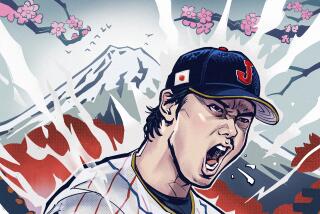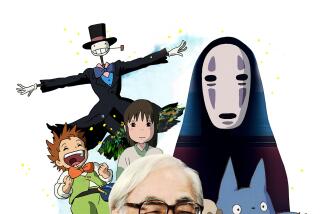ART REVIEW : A RECONCILIATION BETWEEN EAST, WEST
- Share via
Japanese artist Toshimitsu Imai has covered a lot of ground in his 59 years. A protege of Sam Francis, Imai spent the ‘50s in Paris doing heavily impastoed abstractions that read as a stormy rejection of his Oriental heritage. Imai, however, does appear to have eventually reconciled a sensibility once split between East and West, if the evidence provided in an exhibition at the Japanese American Cultural and Community Center can be read at face value.
On view through next Tuesday and including work from throughout Imai’s career, the show focuses on acrylic paintings done over the last three years. Steeped in the traditions of Eastern art, Imai’s lyrical abstractions frequently depict the cycles of nature as a metaphor for the human spirit--an approach that is, of course, one of the bedrocks of Oriental art. And, like most art of this ilk, Imai’s elegantly understated pictures hum with a tranquillity that might read as dull in the hands of a lesser artist.
The centerpiece of the exhibition is an installation that combines the paintings done in Paris with a three-dimensional tableau involving beautifully painted Oriental screens and large chunks of decaying wood arranged on a section of floor covered with 700 red kimonos. Imai’s “western” work from the ‘50s seems decidedly coarse in the company of these wondrous goldleaf screens and lengths of red silk. Nonetheless, that Imai hasn’t disowned the transitional work he did in his 20s, and that he feels it can exist in harmony with the very different work he’s presently doing is a point worth making.
More to Read
The biggest entertainment stories
Get our big stories about Hollywood, film, television, music, arts, culture and more right in your inbox as soon as they publish.
You may occasionally receive promotional content from the Los Angeles Times.










